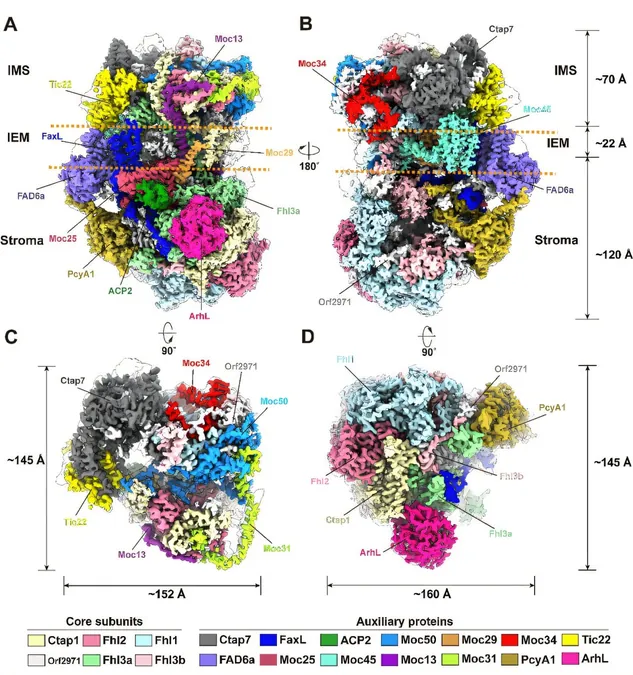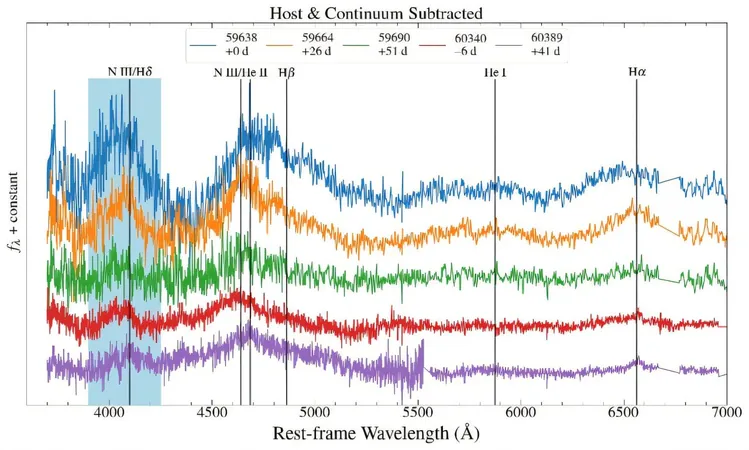
Revolutionary Green Synthesis Method Tackles Semiconductor Photocatalysis Challenges for Hydrogen Production
2024-11-07
Author: Siti
Introduction
Solar-driven photocatalytic water splitting emerges as a frontrunner in sustainable hydrogen production, yet researchers face significant hurdles, chiefly related to bandgap limitations and the costly recombination of charge carriers in various semiconductor materials.
Innovative Solution: CdNCN
Enter CdNCN—an innovative transition metal carbodiimide that has piqued the interest of scientists due to its promising bandgap and robust covalent bonds. By forming heterostructures with CdS, researchers have found that CdNCN can enhance electron transport and separations via quasi-crystalline transition points. However, the conventional methods for synthesizing CdNCN raise concerns due to the use of hazardous reagents, creating scalability challenges that hinder widespread application.
Groundbreaking Study
A groundbreaking study recently published in Advanced Powder Materials by a collaborative team from China and Australia introduces a game-changing method for synthesizing CdNCN-CdS heterostructures under gentle conditions, propelling advancements in photocatalytic hydrogen production to new heights.
One-Pot Synthesis Technique
A highlight of this relative breakthrough is the 'one-pot' synthesis technique which employs thiourea. This method streamlines the process by enabling the formation of [NCN]2- moieties during decomposition, improving the efficiency of the entire setup.
Remarkable Results
'Leveraging the electron-attracting properties of the carbodiimide group within CdNCN allowed us to develop a rapid electron transfer pathway, leading to record-breaking hydrogen evolution efficiency without the need for additional cocatalysts,' states Shengsen Zhang, a co-corresponding author of the study. The results are nothing short of remarkable: the optimized CdNCN-CdS heterostructure achieved a hydrogen evolution rate of 14.7 mmol g-1 h-1 under visible light—surpassing all previously reported CdS-based catalysts in efficiency.
Atomic-Level Transition Sites
'This outstanding performance is the result of establishing atomic-level N–Cd–S transition sites that reduce electron transfer resistance and effectively guide electrons to the CdNCN (110) plane, the prime site for hydrogen capture,' Zhang elaborates.
Catalyst Composition Manipulation
An especially intriguing facet of the research is the ability to manipulate catalyst composition by varying the Cd-to-thiourea ratio. Using in-situ spectroscopy techniques, the researchers demonstrated that the intermediate [NCN]2- moieties exhibit a strong affinity for binding with Cd atoms, further bolstering charge transport within the heterostructure.
Sustainable Energy Revolution
The study not only marks a leap in solar-driven hydrogen production but also sets a precedent for a more eco-friendly and scalable synthesis strategy that addresses many existing challenges in semiconductor-based photocatalysis. As global efforts increase toward green energy alternatives, this innovative approach could pave the way for cleaner, more sustainable hydrogen production methods.






 Brasil (PT)
Brasil (PT)
 Canada (EN)
Canada (EN)
 Chile (ES)
Chile (ES)
 España (ES)
España (ES)
 France (FR)
France (FR)
 Hong Kong (EN)
Hong Kong (EN)
 Italia (IT)
Italia (IT)
 日本 (JA)
日本 (JA)
 Magyarország (HU)
Magyarország (HU)
 Norge (NO)
Norge (NO)
 Polska (PL)
Polska (PL)
 Schweiz (DE)
Schweiz (DE)
 Singapore (EN)
Singapore (EN)
 Sverige (SV)
Sverige (SV)
 Suomi (FI)
Suomi (FI)
 Türkiye (TR)
Türkiye (TR)